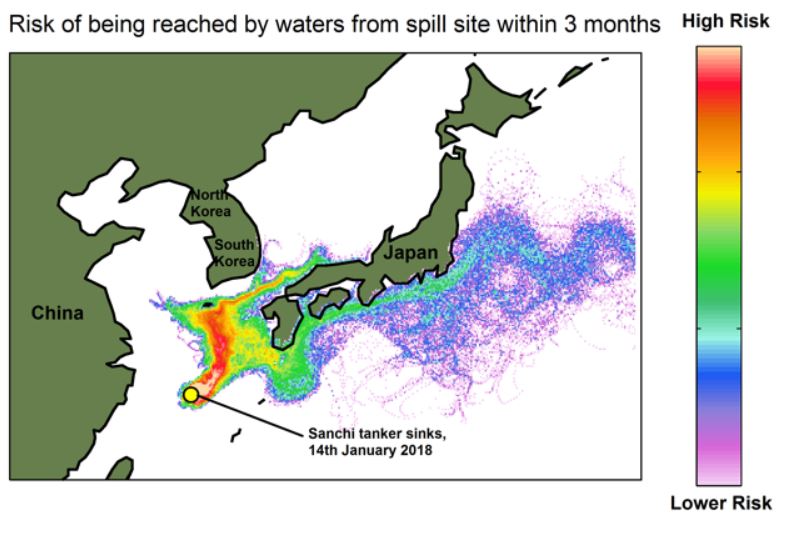
Japan Confirms Oil from the Sanchi is Washing up on Its Beaches
The Japanese Coast Guard has confirmed that the oil that is being washed up on islands in the south of the country is “highly likely” to have come from the stricken Iranian tanker, the Sanchi.
The Japanese Coast Guard has confirmed that the oil that is being washed up on islands in the south of the country is “highly likely” to have come from the stricken Iranian tanker, the Sanchi.
Samples of clumpy oil that washed up earlier this month on the shores of the Okinoerabu and Yoron islands chain “were found to be linked to the Sanchi’s sinking” according to the Japanese Coast Guard. The islands are famous for their pristine beaches and seafood.
Yesterday, a Coast Guard spokesperson told the Reuters news agency that “Oily matter that arrived at the shores of the two islands is extremely likely to be linked to the Sanchi tanker incident, considering the similarity of the oil and the fact that there has not been any marine disaster involving oil spill in the nearby sea area”.
Earlier today, a coastguard spokesman Takuya Matsumoto said essentially the same thing to another news agency, AFP: “We are not aware of any other maritime accident in the region that resulted in oil leaks. So we have concluded that it is highly likely that the oil that reached (the two islands) is connected with Sanchi.”
The Sanchi sank on January 14 in the East China Sea, carrying 136,000 tons of light crude oil called condensate. It also had nearly 1,900 tons of bunker fuel oil on board. Two weeks after the Sanchi sank, black clumps of oily matter started washing up on the shores of Takarajima island. It is likely this oil is the heavy fuel oil that was powering the ship, not the condensate.
Since then oil debris has been found on 21 other islands that are part of a chain of islands that includes Amami-Oshima and Okinawa. Some 90 tonnes of oil debris has been collected so far.
The oil washing up on the beaches is a significant setback for the authorities who originally said last month that there was little chance the spill would reach the county’s shores.
Although the majority of the fuel is believed to have evaporated after the stricken tanker caught fire, an oil slick is still visible close to where the Sanchi sank. It is currently believed to be 700 meters long and 20 meters wide, according to the Japanese Coast Guard.
The Coast Guard added that other reviews of water samples in the region have not shown elevated levels of contamination, although environmental groups are urging for further monitoring of the surrounding area.

